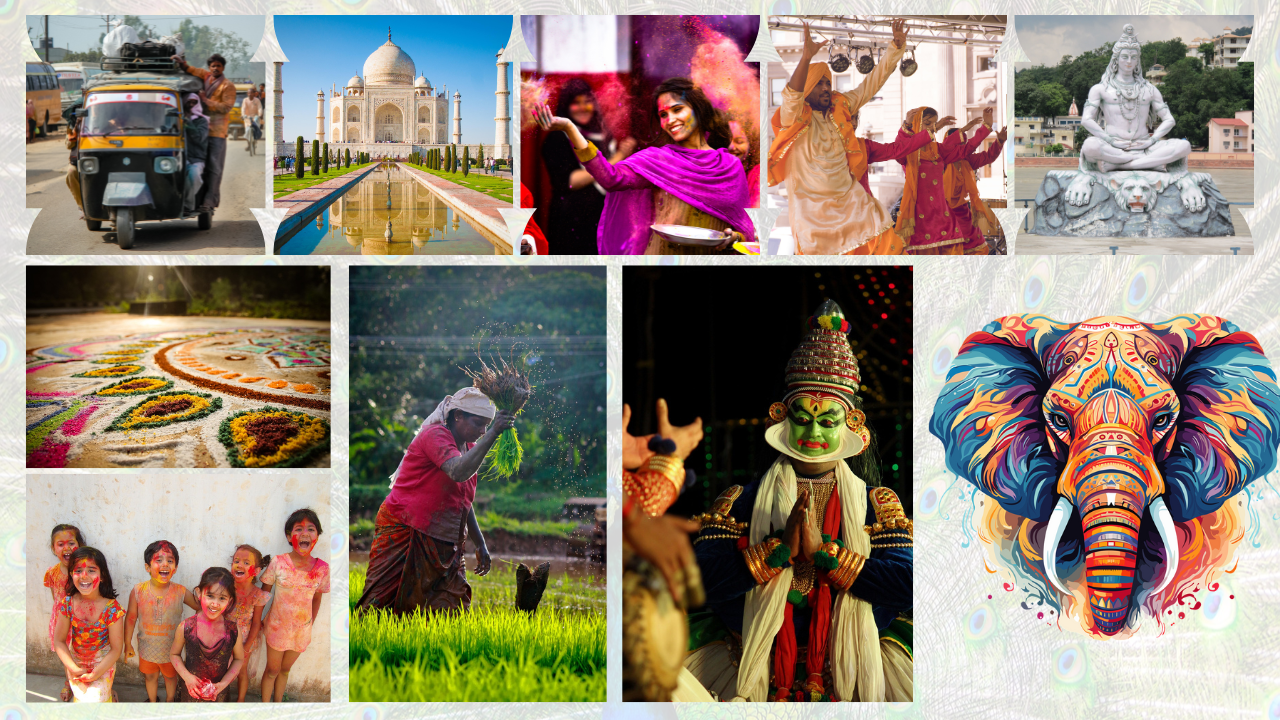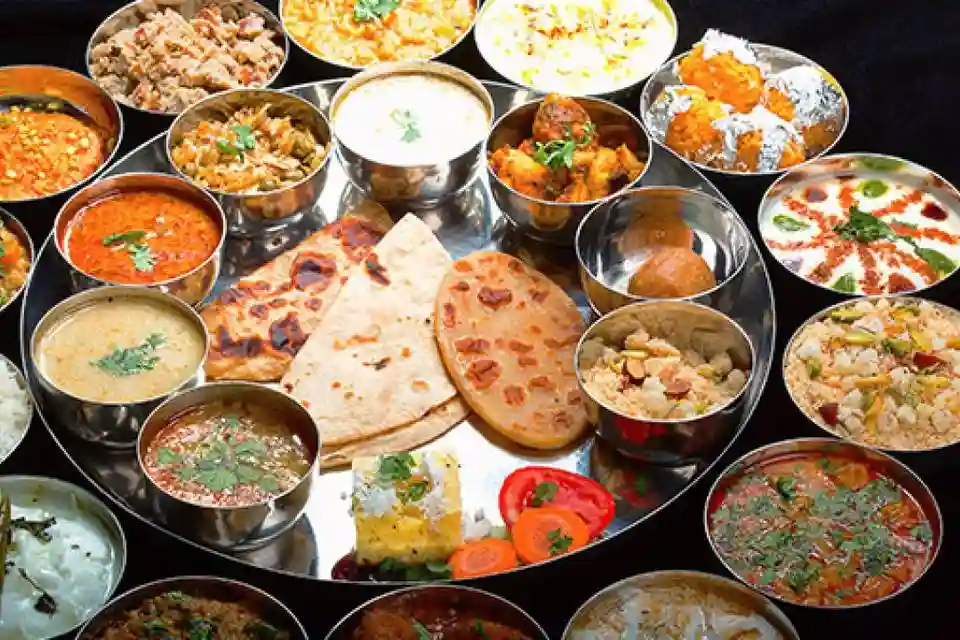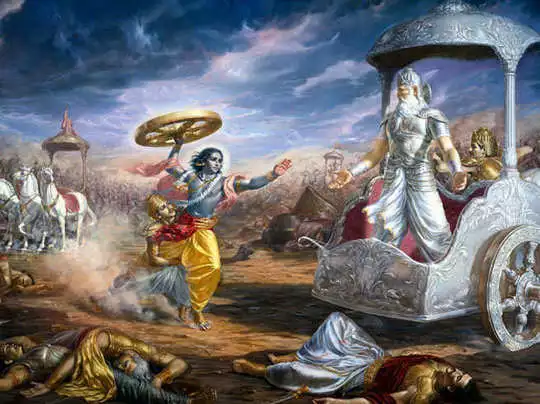Exploring the Richness of Culture and Tradition in India: India, a country of great diversity, is famous for its deep-rooted heritage, vibrant culture & rich heritage. With over 1.4 billion people, speaking hundreds of languages and following a wide range of customs and religions, India is a tapestry of culture dating back thousands of years.
A mixture of religion and spirituality
One of the most defining aspects of Indian culture is its spiritual diversity. India is the birthplace of major religions like Hinduism, Buddhism, Jainism and Sikhism. Additionally, Islam and Christianity have also deeply influenced the nation. Each of these beliefs has shaped Indian philosophy, art & rituals, with religious festivals celebrated with fervor across the country.
Festivals like Diwali (festival of lights), Eid, Christmas, Holi (festival of colors), and Baisakhi reflect the country’s religious pluralism. These celebrations not only have religious significance but also bring communities together, promoting unity and joy.
Language and Literature
India’s linguistic diversity is unparalleled, with 22 official languages and more than 1,600 dialects across the country. From Hindi in the north to Tamil, Telugu & Kannada in the south, and Bengali and Assamese in the east, each language represents a unique cultural identity.
Indian literature, both ancient and modern, has left an indelible mark on world literature. The Vedas, Upanishads, Ramayana & Mahabharata are timeless epics that provide wisdom and insight into the human condition. Classical literature such as Sanskrit, Tamil & Persian as well as contemporary works in regional languages reflect the depth and creativity of Indian literature.
Traditional arts and crafts

Indian arts and crafts are world-renowned for their intricacy and beauty. Each region of India has its distinct art form, from the Madhubani painting of Bihar and Pattachitra of Odisha to the Warli art of Maharashtra and the vibrant Tanjore painting of Tamil Nadu. These visual arts, often linked to religious or mythological themes, are passed down through the generations.
Handicrafts such as pottery, weaving, woodwork, jewelry making & textile dyeing (including the famous bandani and ikat) are central to India’s cultural heritage. The weaving industry, producing iconic textiles such as Banarasi silk, Kanchipuram silk & pashmina shawls, has flourished for centuries, giving a glimpse of India’s artistic heritage.
Dance and Music: A Symphony of Traditions
Indian dance and music traditions are diverse and deeply rooted in the spiritual and cultural fabric of the country. Classical dance forms like Bharatanatyam, Kathak, Kuchipudi, Odissi, Kathakali, Manipuri & Mohinittam each tell a story through intricate movements, expressions & costumes.
Indian classical music is divided into two main traditions: Hindustani music (from North India) and Carnatic music (from South India). Both styles are based on ancient systems of raga and taal (melodic scale and rhythmic cycle), which provide a rich listening experience. Instruments such as the sitar, tabla, veena, mridangam & bansuri (flute) are iconic in Indian music, while vibrant Bollywood film songs and modern Indian pop music have captivated audiences worldwide.
Indian Cuisine: A Feast for the Senses
Indian cuisine is as diverse as its people, with each region having its specialties. From the fiery curries of the South to the rich gravies of the North, Indian cuisine reflects the use of aromatic spices, herbs & traditional cooking techniques. Staples such as rice, lentils, vegetables & different types of bread (such as naan, roti & paratha) are common across the country, but each region adds its unique twist.
In northern India, dishes like biryani, butter chicken, kebabs & tandoori items are popular, while the south is known for its dosa, idli, sambar & Chettinad dishes. The western state of Gujarat offers sweet and savory snacks like dhokla and thepla, while the eastern states are known for their delicious fish curries and sweets like rasgulla and sandesh.
Indian cuisine’s vibrant flavors and variety of vegetarian and non-vegetarian dishes make it one of the most celebrated in the world.
Indian Fashion and Textiles
Traditional clothing in India is as diverse as its landscape. Although sarees are widely worn by women across the country, each region has its variation in draping styles and fabrics. Lehenga cholis, salwar kameez & kurta & are also popular. Men often wear traditional clothing such as dhoti, kurta & sherwani, especially during festivals and weddings.
India is also famous for its textiles, especially silk, cotton, wool & linen. Handwoven fabrics, block printing, embroidery techniques like zardozi and phulkari & designs like paisley and bandhani reflect the craftsmanship of Indian artisans.
Architecture and Monuments

India’s architecture displays its deep historical and cultural heritage, a blend of styles spanning millennia. Ancient temples like Khajuraho Temple, Konark Sun Temple & Meenakshi Temple are marvels of intricate sculptures and symbolism. Islamic influence can be seen in the Taj Mahal, Qutub Minar & Humayun’s Tomb, while stunning Mughal architecture is displayed in the form of domes, minarets & gardens.
India’s forts and palaces, such as Amber Fort, Mehrangarh Fort & City Palace, are testament to its royal history. Modern-day architecture, such as the Lotus Temple in Delhi, bridges traditional design with contemporary innovation.
The richness of Culture and Tradition in India is unparalleled, with each region and community contributing to its mosaic of heritage. From festivals and food to dance, music, art & architecture, Indian culture reflects a harmonious blend of ancient and modern, sacred and secular. This enduring cultural richness makes India not just a country, but a civilization that continues to inspire and fascinate the world.
Read Also: Traditional Ceremonies and Rituals
![]()






One thought on “Exploring the Richness of Culture and Tradition in India”